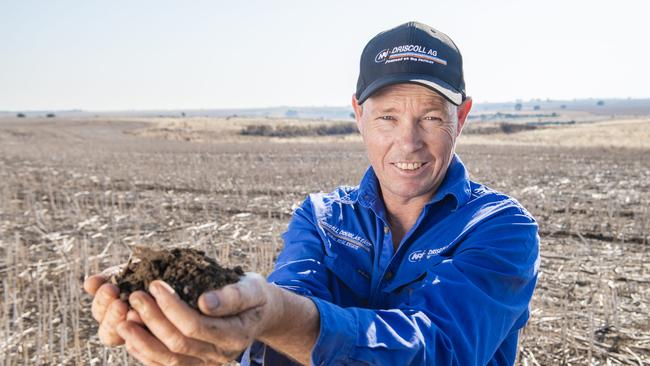Precision soil data with Veris technology helps central Victorian farmers optimise lime use
Farmers in central Victoria are using a soil mapping machine to optimise lime use and boost yields. Get an insight on how it works.

The summer season has provided an ideal opportunity for farmers to do soil mapping to gauge what inputs will be needed before sowing.
At Maryborough in central Victoria, an 80ha area was recently assessed using a Veris machine to gauge how much lime would be needed.
Driscoll Ag warehouse manager at Maryborough Ash Matthews said the machine could assess around 100ha a day, and he was looking specifically at pH levels.
“The next crop to go in this paddock will be canola,” he said.
Agronomist Josh McLeod of Driscoll Ag at Bendigo said the Veris machine and the mapping could help provide a prescription of what inputs were required and where.
He said it wasn’t unusual to see an enormous variance across one paddock.
“We currently have two of these (Veris) machines, and they will help farmers assess what is needed on an input basis,” he said.
“At this recent job at Maryborough, our main motive for that paddock was to gain a better understanding of overall pH variability,” he said.

Mr McLeod said once all of the data is gathered, then a prescription could be made for a variable rate lime application.
“It will take about two weeks from sampling for the information to go back to the lab and then come back to us with a prescription file,” he said.
“Then the lime goes out.”
It was estimated the lime application would take place at the end of the month.
Mr McLeod said the aim was to lift production on a paddock and also to make the best and most efficient use of inputs.
“In one single paddock, it is not unusual to have variances in pH ranging from 4.5 to 5.2 depending on the cropping history and the lime history and soil type,” he said.
He said lime application was important before a canola crop but it was also equally essential before sowing legumes and cereals too.
While the Veris machine has enabled a precision approach, Mr McLeod said the alternative was possibly quite random.
“We might do soil sampling across a paddock,” he said.
“This technology completely takes the guesswork out of it.”
Mr McLeod said the season was looking quite different to this time last year in central Victoria.
“We are much drier,” he said.
There were some isolated thunderstorms about a week ago that he said delivered 30mm to 40mm of rain.
“We still have plenty of time for an autumn break and farmers won’t complain if it doesn’t rain until March,” he said.




